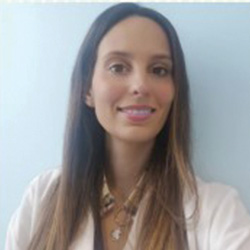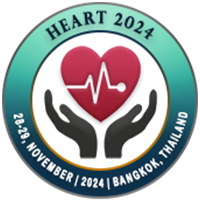
Adriana Babosa Pereira
Centro de Medicina de Reabilitação de Alcoitão, PortugalTitle: Supervised exercise therapy versus endovascular revascularization in patients with intermittent claudication
Abstract
The AHA/ACC 2016 and ESC/ESVS 2017
guidelines recommend Cardiovascular
Rehabilitation programs (CRP) as a multimodal
approach for Peripheral Artery Disease (PAD), in
order to obtain symptomatic relief, prevent future
cardiovascular ischemic events, and influence
prognostic survival. CRP include supervised
exercise therapy (SET), in addition to optimal
medical therapy and lifestyle modification,
representing the first-line treatment for patients
with Intermittent Claudication (IC), to prevent
functional decline and improve quality-of-life.SET
must be offered as a structured program, involving
a multidisciplinary team with expertise in exercise
for cardiovascular patients, under the coordination
of a physiatrist, that must prescribe the appropriate
exercise modalities, taking in to account not only
cardiovascular diseases but also other medical
conditions that influence exercise performance.
Exercise intervention in PAD patients is usually
based on treadmill and track walking, considered
the most effective exercise modalities, performed
for 30-45 minutes, 3 times per week for a minimum
of 12 weeks. SET has demonstrated to increase
ischemic threshold, to improve exercise tolerance
and enhance patient functional capacity recognized
as a strong and independent predictor of mortality
after a cardiovascular event. It also highlighted the
excellent safety profile of different SET in patients
with PAD, when screened for absolute
contraindications to exercise and treated by a team
with the appropriate skills to provide the adjusted
monitoring level. Endovascular revascularization
procedures are readily available techniques,
remunerated, and independent of patient
motivation. Given their low procedural morbidity
and high procedural success they are becoming
increasingly attractive and widespread. In clinical
practice, endovascular treatment alone is being
performed more frequently than SET alone, as
recommended, despite endovascular techniques do
not improve exercise capacity or lower the risk of
revascularization or amputation com- pared with
SET. A recent meta-analysis also demonstrated
that combined therapy is associated with greater
maximum walking distance compared to each
treatment alone, and the 1-year reintervention rate
reported also seemed lower compared to
endovascular treatment alone. Despite carrying a
class I recommendation for the initial management
of IC, major limitations of SET are poor access in
most countries due to reimbursement issues,
dependence on patient motivation, and compliance. In Portugal, there is still a paucity of
Cardiovascular Rehabilitation Units, compared to
other European countries, hampering access for
patients to this multimodal approach. The lack of
knowledge from patients and physicians about
these programs also contributes to low referral
rates and compromises their widespread use.
The multiple barriers to the implementation of
these programs motivate the use of alternatives
such as unstructured community- or home-based
walking programs that consist of providing
recommendations for patients with claudication to
simply walk. Whenever SET is not available, the
AHA/ACC 2016 Guideline recommends structured
Community-based Exercise therapy or Homebased Exercise therapy with the guidance of
healthcare providers.
Future studies are needed, focusing on multidimensional approaches and clinically relevant longterm outcomes, to determine the most effective
management strategy for these patients.
Consideration on reimbursement issues for SET
and greater awareness of the medical community
on the importance of referring patients to CRP
might be critical to improving adherence to these
programs
Biography
Adriana Barbosa Pereira has completed her Master
Degree in Pharmaceutical Science ate 23 years
from Faculdade de Farmácia da Universidade do
Porto and Master Degree in Medicine at the age of
31 years from Faculdade de Medicina da
Universidade do Porto, Portugal
He is now physiatrist at department of Physical
Medicine and Rehabilitation at Cenytro de
Medicina de Reabiltação de Alcoitão, Lisboa,
Portugal.

